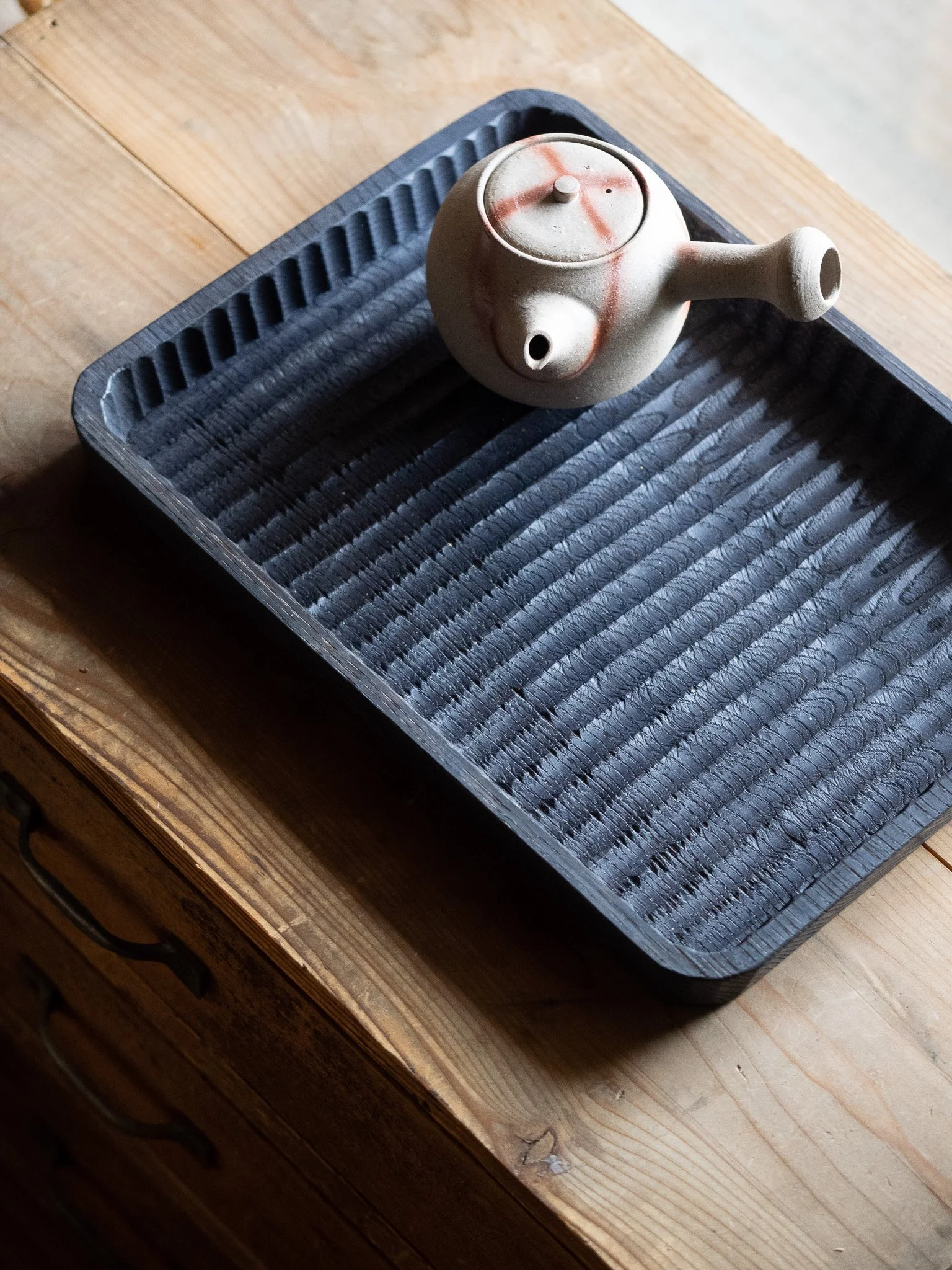the (almost) lost art of Wagatabon
historical Waagatabon made in Wagatani Village, Japan
What is a Wagatabon?
Wagata-Bon (我谷盆) is a style of wooden tray carved often from chestnut slabs with distinct ridges across the grain. Wagatabon used to be made by roof-shingle makers in the Village of Wagatani, Ishikawa, Japan.
the history of Wagatabon
The story of Wagatabon trays starts and almost ends with a Village now completely underwater in the Prefecture of Ishikawa, Japan. Wagatani, giving the textured trays their name, has been flooded in 1965 to make room for a dam and the art of making Wagatabon almost disappeared with it.
The village of maybe 200 people depended on making wooden roof shingles for centuries before ceramic tiles eventually replaced them. These shingles were usually made from green (fresh unseasoned) chestnut wood which was abundant in the area. The logs were split along the fibres, often producing uneven but durable slabs. Chestnut is quite rot-resistant due to the high amount of natural tannins it contains. A few of these shingles, some say the leftovers, others speak of the best pieces, were then carved into wooden trays during the off-season. Although it seems several artisans of Wagatani made these trays in various sizes, holding all kinds of things from Tabaco to sweets and rice offerings, there aren’t many originals to be found outside the surrounding area. One craftsman known to make the distinct trays was Tasuke Nakasuji, who made a name for himself with this craft which led to Wagata-bon, sometimes also being known as Tasuke-bon, bon (盆), simply meaning tray.
With the beginning of the Wagatani dam construction in 1961, the villagers were forced to leave their houses, leaving behind the already unprofitable shingle businesses as well as the craft of carving Wagatabon. Urban legend has it that wooden trays were floating on the water’s surface once the village was flooded.
original four legged Wagatabon made in Wagatani Village
Wagatabon and Mingei philosophy
Tatsuaki Kuroda (黒田辰秋) is said to be the first to draw public attention to the craft of Wagatabon, writing about it in the Folkcraft Magazine Mingei Techo’s 64th issue in September 1963. Kuroda (1904-1982), a renowned woodworker and Urushi-lacquer artisan, was announced a living national treasure (Ningen Kokuhō) in 1970 and a collector of Wagatabon. As a supporter of the Mingei movement, a movement standing up for the “ordinary peoples crafts”, he saw the trays as excellent examples of unintentionally aesthetical objects of everyday use by anonymous craftsmen.
Wagatabon made by Rabea Gebler under the guidance of Moriguchi
Wagatabon Artists today
There have since been only a few attempts at reviving the lost art of the simple trays, with Shinichi Moriguchi (his daily Instagram posts are a great learning resource) giving great dedication to spreading the knowledge of transforming a simple slab into these valuable objects today. He himself has learned mainly through looking at photographs of original Wagatabons but has gathered great skill over the years of possibly making thousands of them. He is among the few Japanese craftspeople making Wagatabon today but is eager to teach and preserve the Art.


